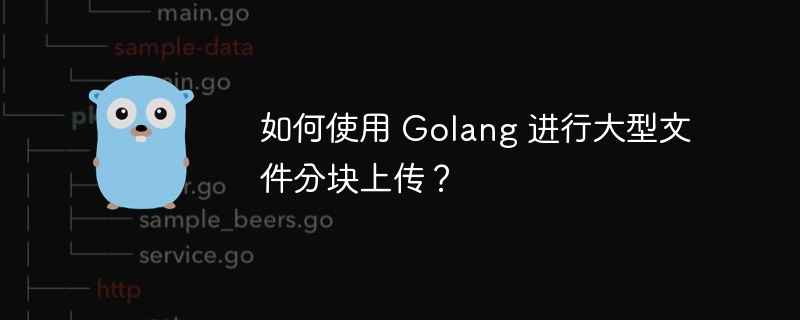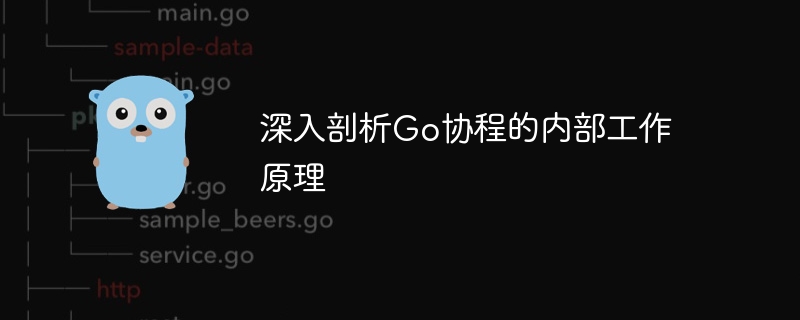在 Go 协程中同步不同时区的方法:使用 time.LoadLocation() 函数从时区数据库中加载时区信息,返回代表该时区的 *time.Location 实例。在协程中使用上下文,将 *time.Location 上下文传递给每个协程,使其可以访问相同的时间信息。在实际应用中,可以根据订单的时区打印时间戳或处理订单的逻辑。

如何在 Goroutine 中同步不同的时区
协程是一个轻量级的线程,经常在 Go 中用于并发编程。当在不同时区处理数据时,手动同步时间可能会很棘手。本教程将展示如何使用 Go 标准库来处理不同的时区并保持时间同步。
使用 time.LoadLocation()
time.LoadLocation() 函数用于从时区数据库中加载时区信息。通过提供时区的名称,可以获取一个代表该时区的 *time.Location 实例。
import (
"fmt"
"time"
)
func main() {
// 加载东京时区
tokyo, err := time.LoadLocation("Asia/Tokyo")
if err != nil {
log.Fatal(err)
}
// 加载纽约时区
newYork, err := time.LoadLocation("America/New_York")
if err != nil {
log.Fatal(err)
}
// 创建一个 Tokyo 时间的时刻
tokyoTime := time.Now().In(tokyo)
fmt.Println("东京时间:", tokyoTime.Format("2006-01-02 15:04:05"))
// 创建一个纽约时间的一个时刻
newYorkTime := time.Now().In(newYork)
fmt.Println("纽约时间:", newYorkTime.Format("2006-01-02 15:04:05"))
}在协程中使用上下文
当使用协程处理数据时,可以在将 *time.Location 上下文传递到每个协程中,这样它们都可以访问相同的时间信息。
package main
import (
"context"
"fmt"
"time"
)
func main() {
ctx := context.Background()
// 加载东京时区
tokyo, err := time.LoadLocation("Asia/Tokyo")
if err != nil {
log.Fatal(err)
}
// 使用 Tokyo 时区创建上下文
ctx = context.WithValue(ctx, "timeZone", tokyo)
go func() {
// 从上下文中获取时区
timeZone := ctx.Value("timeZone").(*time.Location)
// 创建东京时间的一个时刻
tokyoTime := time.Now().In(timeZone)
fmt.Println("东京时间:", tokyoTime.Format("2006-01-02 15:04:05"))
}()
// 加载纽约时区
newYork, err := time.LoadLocation("America/New_York")
if err != nil {
log.Fatal(err)
}
// 使用纽约时区创建上下文
ctx = context.WithValue(ctx, "timeZone", newYork)
go func() {
// 从上下文中获取时区
timeZone := ctx.Value("timeZone").(*time.Location)
// 创建纽约时间的一个时刻
newYorkTime := time.Now().In(timeZone)
fmt.Println("纽约时间:", newYorkTime.Format("2006-01-02 15:04:05"))
}()
time.Sleep(time.Second)
}实战
让我们看一个实际的例子,在该例子中,我们将使用不同的时区处理来自不同地区的订单。
package main
import (
"context"
"fmt"
"time"
)
type Order struct {
Timestamp time.Time
Location string
}
func main() {
ctx := context.Background()
// 加载东京时区的订单
tokyoOrder := Order{
Timestamp: time.Now().In(time.LoadLocation("Asia/Tokyo")),
Location: "Tokyo",
}
// 加载纽约时区的订单
newYorkOrder := Order{
Timestamp: time.Now().In(time.LoadLocation("America/New_York")),
Location: "New York",
}
// 使用东京时区创建上下文
ctxTokyo := context.WithValue(ctx, "order", tokyoOrder)
// 使用纽约时区创建上下文
ctxNewYork := context.WithValue(ctx, "order", newYorkOrder)
go processOrder(ctxTokyo)
go processOrder(ctxNewYork)
time.Sleep(time.Second)
}
func processOrder(ctx context.Context) {
// 从上下文中获取订单
order := ctx.Value("order").(Order)
// 根据订单的时区打印时间戳
fmt.Printf("订单来自 %s,时间戳为:%sn", order.Location, order.Timestamp.Format("2006-01-02 15:04:05"))
} 




